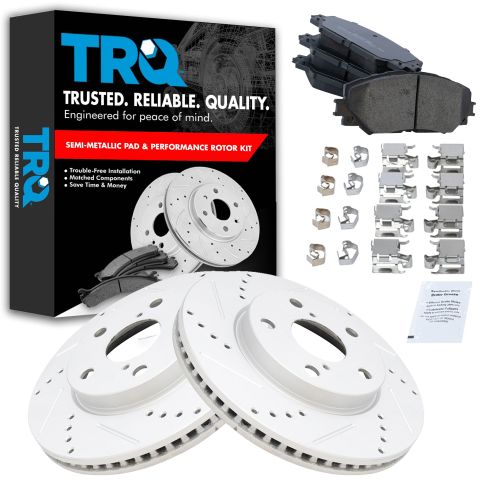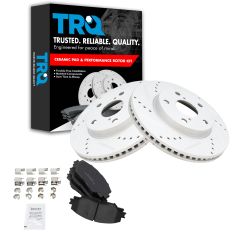1APBS00889-Toyota Lexus Scion Front Semi-Metallic Performance Brake Pad & Rotor Kit TRQ Performance BKA12678

Replaces
2018 Toyota Prius V Front Semi-Metallic Performance Brake Pad & Rotor Kit TRQ Performance BKA12678

Product Reviews
Loading reviews
5.00/ 5.0
1
1review
March 31, 2024
Great rotors and pads! Great Price and Delivery!
Customer Q&A
Is this for both sides or just 1 side?
November 12, 2021
10
This is for both driver and passenger sides.
November 13, 2021
Cristina P
10
The brake pads always come for both sides.Either front or back.Make sure you order the correct year ALSO the trim LX LXE etc.sometimes the trim lever makes a difference.Good luck.Regards Paul.
November 13, 2021
Paul L
You sure this will fit a Rav4 LE? I heard it comes in different rotors. One in 275 mm and another at 295 mm. Brake pads are different as well.
December 12, 2021
10
Hello, Yes this would fit your vehicle based on the additional rotor diameter provided in the listing.
January 12, 2022
Ricale A
Is this will fit my 2010rav4 V6? Thanks
May 15, 2023
10
No, this kit will not fit your vehicle. We would be happy to check to see if we have the correct parts. Does your vehicle have the third row? What sub model is your Rav4?
May 16, 2023
Andra M
Toyota is a registered trademark of Toyota Motor Corporation. 1A Auto is not affiliated with or sponsored by Toyota or Toyota Motor Corporation.
See all trademarks.











